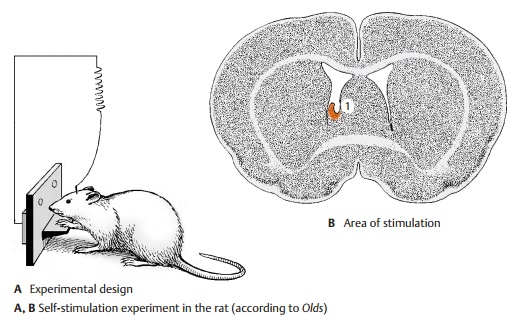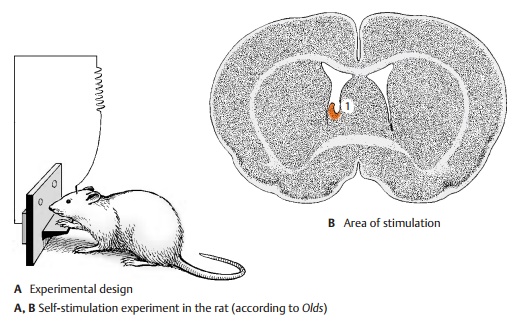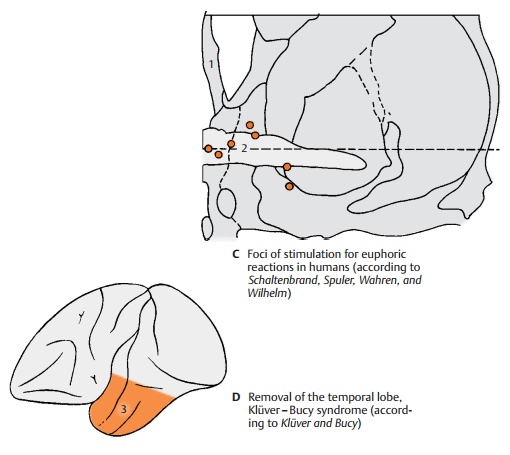Chapter: Human Nervous System and Sensory Organs : Functional Systems
Septal Area - Limbic System

Septal Area
There are strong connections to the hippo-campus, the central structure of the limbic system. Cholinergic and GABAergic neurons of the medial septal nucleus project to the hippocampus and the dentate gyrus; col-laterals of the CA3 pyramidal cells project back to the lateral septal nucleus.
As with stimulation of the amygdaloid body, electrical stimulation of the septal area (BC1) triggers oral reactions (licking, chew-ing, retching), excretory reactions (defeca-tion, urination), and sexual reactions (erec-tion). The septal area, especially the diago-nal band of Broca, is also the preferred local-ization for self-stimulation experiments in the rat (A, B). Rats carrying an implanted electrode that facilitates stimulation of this area continuously stimulate themselves by pressing a button. The urge for stimulation is so strong that the animals prefer stimula-tion to feeding, even after periods of hungeror thirst. Stimulation near the anterior com-missure (C2) produces a euphoric reaction and the general feeling of well-being in humans.


Klüver – Bucy syndrome (D).This syn-drome was observed following bilateral re-moval of the temporal lobe (D3) in the monkey. The lobectomy affected the neo-cortex, hippocampus, and amygdaloid body, and resulted in a polysymptomatic be-havioral syndrome. The animals became tame and trusting; they lost their natural behavior and shyness even toward danger-ous objects or animals (such as snakes). In addition, they completely lost any sexual in-hibition (hypersexuality). Familiar objects were no longer recognized visually (visualagnosia); instead, they were put in themouth (oral tendency) and examined re-peatedly this way as if they were completely unknown each time they were encountered. The disturbed memory indicates a special role of the hippocampus in processes of learning and memory. Information from the neocortex, such as visual impressions, is transmitted to the hippocampus via the en-torhinal area and examined for its novelty value.
There is no doubt that the limbic system in-cludes very divergent and complex func-tions. It is likely that increases in knowledge will soon lead us to abandon the summary and vague concept of one limbic system.
Related Topics